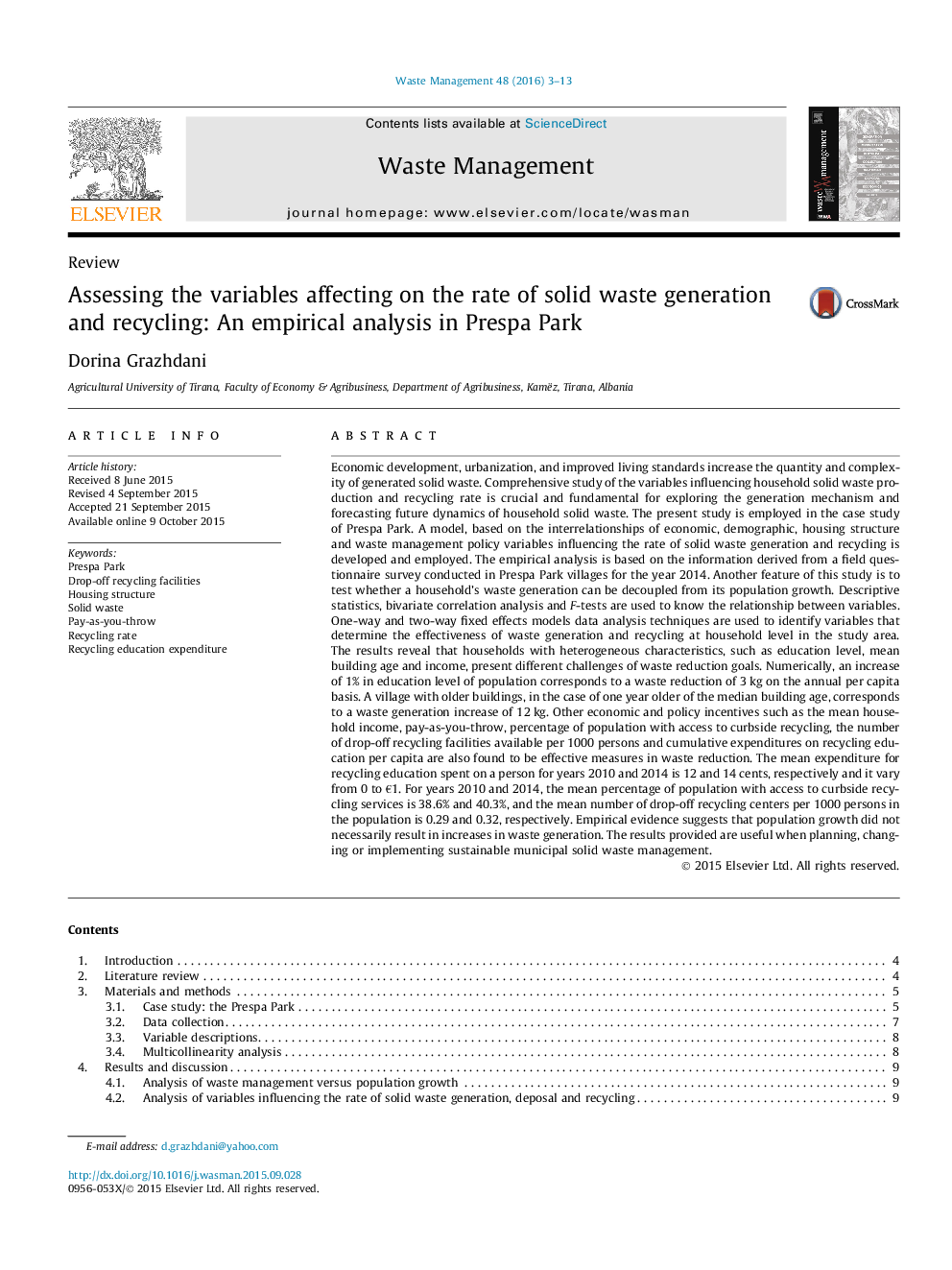| کد مقاله | کد نشریه | سال انتشار | مقاله انگلیسی | نسخه تمام متن |
|---|---|---|---|---|
| 6354067 | 1622638 | 2016 | 11 صفحه PDF | دانلود رایگان |

- Several regression models are used to estimate variables affecting on waste reduction.
- Relevant causal factors regarding solid waste generation and recycling are analyzed.
- Households variables present different challenges on generation and recycling goals.
- Some economic and policy incentives are proved to be effective in waste management.
Economic development, urbanization, and improved living standards increase the quantity and complexity of generated solid waste. Comprehensive study of the variables influencing household solid waste production and recycling rate is crucial and fundamental for exploring the generation mechanism and forecasting future dynamics of household solid waste. The present study is employed in the case study of Prespa Park. A model, based on the interrelationships of economic, demographic, housing structure and waste management policy variables influencing the rate of solid waste generation and recycling is developed and employed. The empirical analysis is based on the information derived from a field questionnaire survey conducted in Prespa Park villages for the year 2014. Another feature of this study is to test whether a household's waste generation can be decoupled from its population growth. Descriptive statistics, bivariate correlation analysis and F-tests are used to know the relationship between variables. One-way and two-way fixed effects models data analysis techniques are used to identify variables that determine the effectiveness of waste generation and recycling at household level in the study area. The results reveal that households with heterogeneous characteristics, such as education level, mean building age and income, present different challenges of waste reduction goals. Numerically, an increase of 1% in education level of population corresponds to a waste reduction of 3 kg on the annual per capita basis. A village with older buildings, in the case of one year older of the median building age, corresponds to a waste generation increase of 12 kg. Other economic and policy incentives such as the mean household income, pay-as-you-throw, percentage of population with access to curbside recycling, the number of drop-off recycling facilities available per 1000 persons and cumulative expenditures on recycling education per capita are also found to be effective measures in waste reduction. The mean expenditure for recycling education spent on a person for years 2010 and 2014 is 12 and 14 cents, respectively and it vary from 0 to â¬1. For years 2010 and 2014, the mean percentage of population with access to curbside recycling services is 38.6% and 40.3%, and the mean number of drop-off recycling centers per 1000 persons in the population is 0.29 and 0.32, respectively. Empirical evidence suggests that population growth did not necessarily result in increases in waste generation. The results provided are useful when planning, changing or implementing sustainable municipal solid waste management.
Journal: Waste Management - Volume 48, February 2016, Pages 3-13